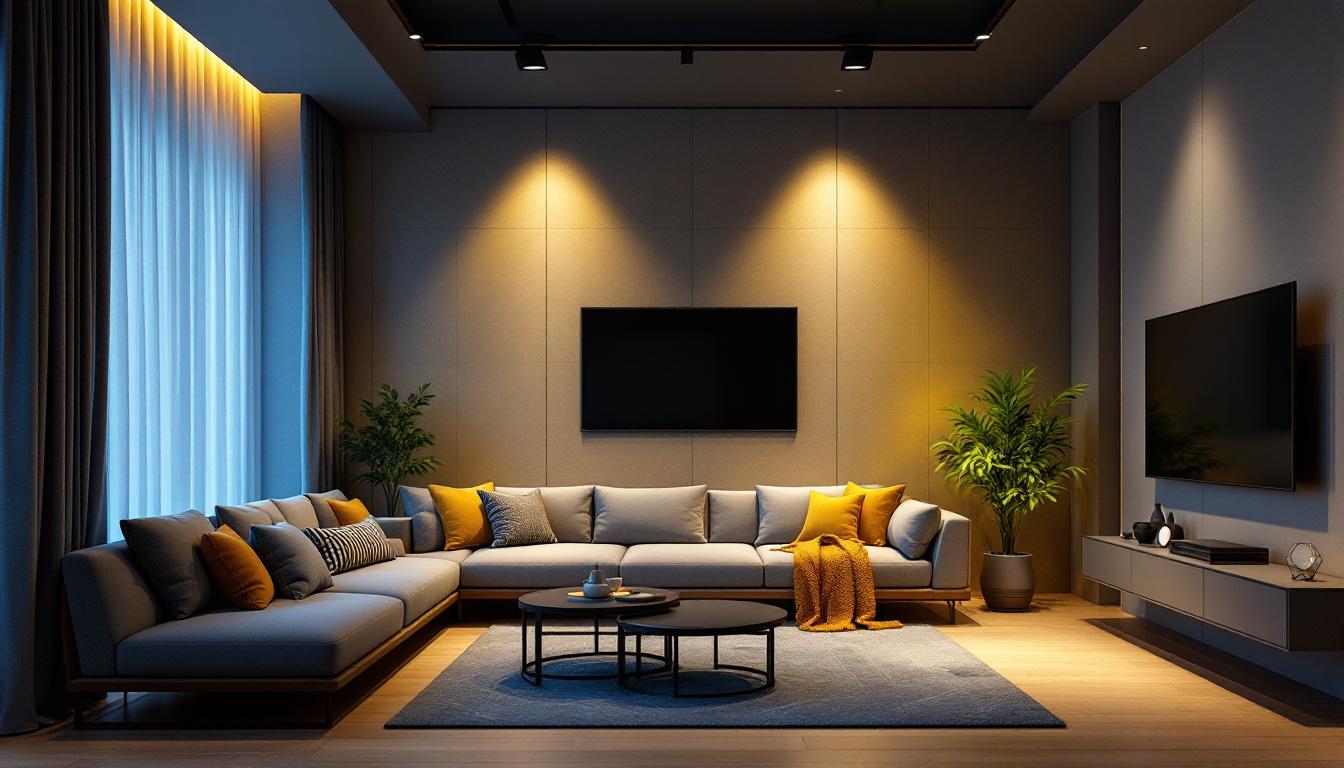
Lighting plays a crucial role in enhancing the aesthetics and functionality of buildings. For lighting contractors, mastering the art and science of lighting design is essential. This article delves into the top resources available to lighting contractors, providing insights, tools, and strategies to elevate their craft in illuminating buildings effectively.
Lighting design is not merely about installing fixtures; it is an intricate blend of art and technology. The right lighting can transform a mundane space into a vibrant environment, influencing mood, productivity, and safety. For contractors, understanding the principles of lighting design is fundamental to delivering quality work. It involves not just the placement of lights, but also the consideration of how light interacts with colors, textures, and materials within a space. This understanding can elevate a project from ordinary to extraordinary, making it essential for contractors to stay informed about the latest trends and technologies in lighting design.
Research shows that lighting significantly affects human behavior and emotions. Warm lighting can create a cozy atmosphere, while cooler tones can enhance focus and alertness. For contractors, recognizing these psychological impacts enables them to tailor lighting solutions that meet the specific needs of their clients. For instance, in a workspace, using bright, white light can boost productivity and reduce fatigue, whereas softer lighting in a restaurant can encourage relaxation and social interaction. Understanding these nuances allows contractors to create environments that not only look good but also feel good, enhancing the overall experience for occupants.
Lighting can be categorized into functional and aesthetic types. Functional lighting serves practical purposes, such as illuminating workspaces, while aesthetic lighting enhances the visual appeal of a structure. A successful lighting contractor must balance both aspects to create a harmonious environment. This balance often involves layering different types of lighting—ambient, task, and accent—to achieve a well-rounded effect. For example, in a living room, ambient lighting provides overall illumination, task lighting focuses on specific areas like reading nooks, and accent lighting highlights artwork or architectural features. By skillfully integrating these elements, contractors can enhance the usability and beauty of a space, making it more inviting and enjoyable for its users.
Moreover, the choice of lighting fixtures plays a crucial role in both functionality and aesthetics. From sleek, modern designs to vintage-inspired pieces, the selection can complement the overall design theme of a space. Energy efficiency is another important consideration; with advancements in LED technology, contractors can offer sustainable lighting solutions that reduce energy consumption while providing high-quality illumination. This not only benefits the environment but also appeals to clients who are increasingly conscious of their ecological footprint. By staying abreast of innovations in lighting technology, contractors can provide informed recommendations that align with their clients’ values and preferences, ultimately leading to more successful projects.
To excel in the lighting industry, contractors need access to a variety of resources. These resources can range from software tools to educational materials, each contributing to a contractor’s skill set and knowledge base. As the industry continues to innovate, staying informed about the latest trends and technologies is crucial for maintaining a competitive edge.
Utilizing advanced software is essential for modern lighting design. Programs such as DIALux and AGi32 allow contractors to create detailed lighting simulations, helping clients visualize the final outcome. These tools can calculate light levels, energy efficiency, and even the environmental impact of various lighting choices. Additionally, many software platforms integrate with building information modeling (BIM) systems, facilitating seamless collaboration with architects and engineers throughout the project lifecycle.
Moreover, many software platforms offer user-friendly interfaces and extensive libraries of fixtures, enabling contractors to experiment with different designs quickly. Investing time in mastering these tools can significantly enhance a contractor’s efficiency and output quality. Furthermore, staying updated with software updates and new features can unlock additional functionalities, such as advanced rendering options and real-time collaboration capabilities, which can further streamline the design process and improve client satisfaction.
The lighting industry is constantly evolving, with new technologies and trends emerging regularly. To stay competitive, contractors should engage in ongoing education. Numerous organizations offer workshops, webinars, and certifications focused on lighting design and technology. These programs often cover topics such as energy-efficient lighting solutions, smart lighting systems, and the integration of renewable energy sources, which are becoming increasingly important in today’s environmentally conscious market.
Participating in these educational opportunities not only sharpens skills but also provides networking opportunities with industry professionals. This can lead to collaborations and partnerships that enhance a contractor’s business prospects. Additionally, many educational institutions and trade associations provide access to research papers and case studies, allowing contractors to learn from real-world applications and innovations in lighting design. By leveraging these resources, contractors can stay ahead of the curve and offer cutting-edge solutions to their clients, ensuring their services remain relevant and sought after.
Building a strong network is invaluable for lighting contractors. Engaging with professional organizations can provide access to a wealth of resources, including industry news, best practices, and professional development opportunities.
Associations such as the Illuminating Engineering Society (IES) and the International Association of Lighting Designers (IALD) offer membership benefits that include access to exclusive publications, conferences, and forums. These platforms allow contractors to stay informed about the latest trends and technologies in lighting design.
Membership in such organizations also lends credibility to contractors, as it demonstrates a commitment to professional standards and ongoing learning. This can be a significant advantage when bidding for projects or seeking new clients.
In today’s digital age, social media platforms and online forums serve as excellent resources for lighting contractors. Engaging with communities on platforms like LinkedIn, Facebook, and specialized forums allows contractors to share experiences, seek advice, and showcase their work.
These interactions can lead to valuable insights and innovative ideas, helping contractors to stay ahead of the curve. Additionally, social media can be a powerful marketing tool, enabling contractors to reach a broader audience and attract potential clients.
The lighting industry is increasingly influenced by technological advancements. From smart lighting systems to energy-efficient solutions, staying informed about the latest technologies is crucial for contractors aiming to provide cutting-edge services.
Smart lighting systems have revolutionized how spaces are illuminated. These systems allow for remote control, automation, and energy monitoring, providing clients with enhanced convenience and efficiency. Contractors should familiarize themselves with various smart lighting products and their installation processes.
Understanding how to integrate smart technology into traditional lighting designs can set contractors apart from competitors. Offering clients the option to control their lighting systems through mobile apps or voice commands can significantly enhance the user experience.
As sustainability becomes a priority for many clients, lighting contractors must be well-versed in energy-efficient solutions. LED technology, for instance, has transformed the industry by offering long-lasting and energy-saving options.
Contractors should stay updated on energy codes and regulations, as well as incentives for energy-efficient installations. This knowledge not only helps contractors provide better solutions but also positions them as responsible and informed professionals in the eyes of their clients.
Inspiration can come from various sources, and studying successful projects can provide valuable insights for lighting contractors. Analyzing case studies allows contractors to learn from the challenges and successes of others in the field.
Many lighting design firms and contractors showcase their work through online portfolios. These portfolios can serve as a source of inspiration, highlighting innovative approaches to lighting design. By exploring different styles and techniques, contractors can expand their creative horizons and apply new ideas to their projects.
Additionally, attending design exhibitions and trade shows can provide firsthand exposure to cutting-edge lighting solutions and trends. Engaging with industry leaders and peers at these events can spark new ideas and collaborations.
Case studies provide a detailed examination of specific projects, outlining the challenges faced and the solutions implemented. They often include insights into the design process, client interactions, and the impact of lighting on the overall project.
Contractors can benefit from studying these case studies to understand best practices and avoid common pitfalls. This knowledge can be invaluable when approaching new projects, enabling contractors to make informed decisions and deliver exceptional results.
Effective communication and project management are essential skills for lighting contractors. Building strong relationships with clients and managing projects efficiently can significantly impact the success of a contractor’s business.
From the initial consultation to project completion, maintaining open lines of communication with clients is vital. Contractors should ensure that clients are informed about the project’s progress, timelines, and any potential challenges that may arise.
Utilizing project management tools can streamline communication and keep all parties on the same page. Regular updates and feedback sessions can help build trust and ensure that the client’s vision is being realized.
Setting realistic expectations is crucial for client satisfaction. Contractors should clearly outline what clients can expect in terms of timelines, costs, and deliverables. This transparency helps prevent misunderstandings and fosters a positive working relationship.
Additionally, being proactive in addressing any issues that arise during the project can demonstrate professionalism and commitment to quality. Clients appreciate contractors who take responsibility and work collaboratively to find solutions.
For lighting contractors, mastering the art of lighting design requires a blend of technical knowledge, creativity, and effective communication. By leveraging the resources available, from software tools to professional organizations, contractors can enhance their skills and deliver exceptional lighting solutions.
As the industry continues to evolve, staying informed about the latest technologies and trends is essential. By embracing innovation and prioritizing client relationships, lighting contractors can position themselves as leaders in the field, creating stunning illuminated spaces that leave a lasting impression.
Ultimately, the journey to mastering lighting design is ongoing. With dedication, continuous learning, and a commitment to excellence, lighting contractors can illuminate the future of architectural spaces, one project at a time.
Ready to take your lighting designs to the next level? At LumenWholesale, we provide lighting contractors like you with the resources to masterfully light up any building. Our spec-grade lighting products are not only top-quality but also offered at unbeatable wholesale prices. Say goodbye to local distributor markups and hello to superior lighting products that meet the highest industry standards. With free shipping on bulk orders, you can trust that you’re getting premium lighting at the best value — no hidden fees, no compromises. Elevate your lighting projects with the perfect blend of quality, affordability, and convenience at LumenWholesale.

Discover the often-overlooked aspects of ceiling mount exterior lights that even seasoned lighting contractors might miss.

Discover how solar lights for signs are revolutionizing lighting contractors’ projects by offering sustainable, cost-effective, and efficient solutions.

Discover how decorative junction box covers can transform your lighting setup with style and functionality.

Discover how reces lights are revolutionizing the lighting industry with their innovative design and energy efficiency.